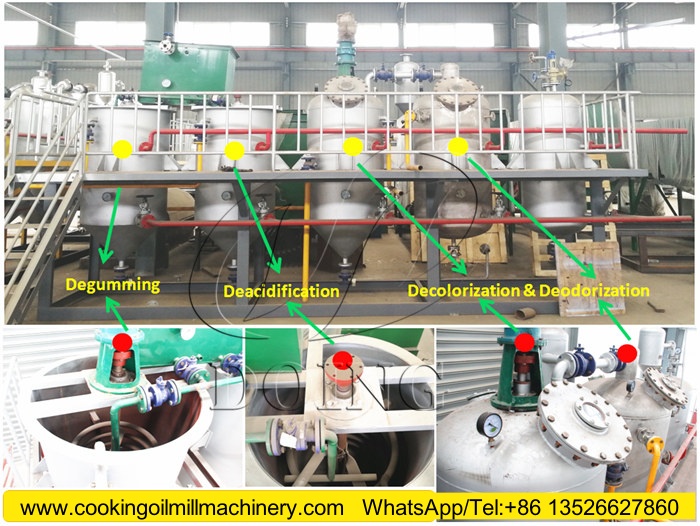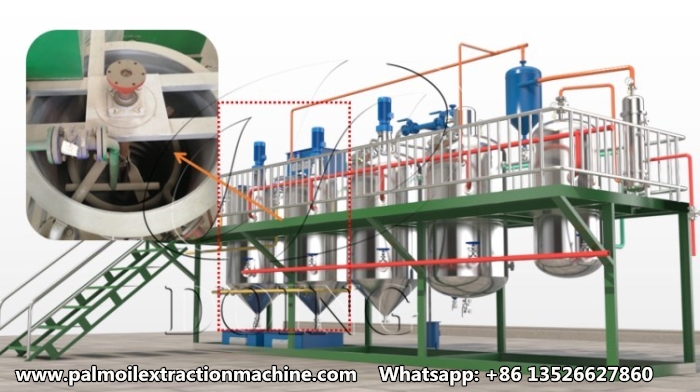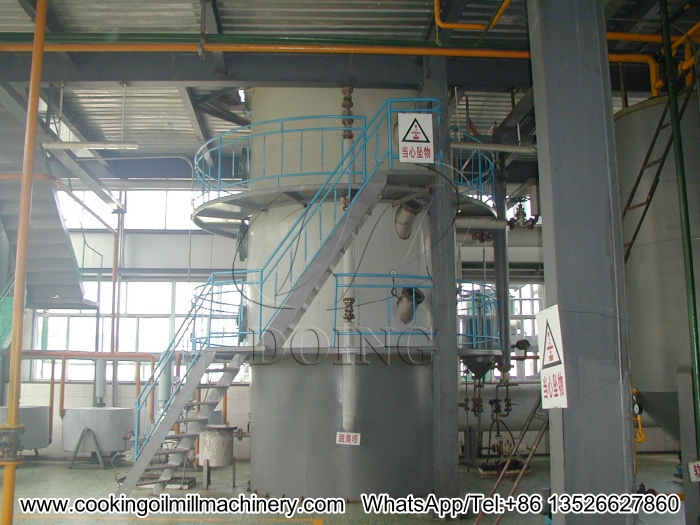

Crude Oil Refining Equipment: Key Machines & Their Roles
FAQ / Chat on line / Give me a price / Date:October 30, 2025
Are you looking to improve oil quality and optimize production efficiency with right oil refining equipment for your edible oil processing plant? Drawing on years of industry experience, Henan Glory outlines the key machines for the crude oil refining equipment and their roles—to help you gain a clearer understanding of the equipment's value at each stage.
 Cooking oil refining equipment
Cooking oil refining equipment
1. Degumming: Key Machines Used to Remove Phospholipids and Impurities
Degumming is the first step in oil refining, primarily aimed at removing hydrated and non-hydrated phospholipids, as well as particulate impurities, from crude oil.
Key Machines and Their Roles:
Degumming Tank: The degumming tank is the core reaction vessel in the degumming process. Crude oil, preheated by a heat exchanger, enters the tank along with degumming agents such as phosphoric acid. The tank is typically equipped with a stirring device to ensure uniform mixing of the oil and reagents. Its stainless steel structure and sealed design effectively prevent contamination and ensure stable reaction conditions.
Heat Exchanger and Heater: Precisely controlling the oil temperature entering the degumming tank is crucial for ensuring the smooth progress of the hydration reaction.
Sealed Filter: As an auxiliary process, it can remove trace impurities from the oil.
2. Deacidification: Key Machines Used to Remove Free Fatty Acids
Deacidification aims to remove free fatty acids from oils to improve flavor stability and extend shelf life. Chemical neutralization is the most commonly used method.
Key Machines and Their Roles:
Deacidification Tank: The key machine for batch crude oil refining. This multifunctional tank, equipped with stirring and heating, completes the entire deacidification process in one vessel. The process involves adding an alkali, heating and stirring to form soapstock, and then allowing it to settle for separation from the oil.
Disc Centrifuge: Essential for continuous crude oil refining equipment. Its high-speed rotation generates a powerful centrifugal force that enables highly efficient separation of soapstock, the by-product of deacidification.
Metering Pump: Accurately measures and delivers phosphoric acid and alkali solution.
Vacuum Dryer: Removes excess water from the washed oil.
 Deacidification tank in cooking refining equipment
Deacidification tank in cooking refining equipment
3. Decolorization: Key Machines Used to Adsorb Pigments and Trace Impurities
Decolorization is the process of removing pigments (carotenoids, chlorophyll) and residual soap particles from oils using adsorbents (such as activated clay). The selection of equipment must be differentiated based on continuous and batch modes.
Key Machines and Their Roles:
Decolorization Tank/Tower: Continuous crude oil refining equipment uses a decolorization tower. Activated clay is added via an automatic quantitative feeding system and mixed with the oil preheated to 90°C within the tower. This equipment operates under vacuum conditions to prevent oxidation of the oil during heating. The resulting mixture is then filtered to separate the waste activated clay from the oil.
Activated Clay Quantitative Feeding System: Primarily used with continuous equipment to achieve precise addition of the adsorbent.
Heater: Controls the adsorption temperature required for decolorization.
Leaf Filter: Separates the decolorized oil from the waste activated clay.
4.Deodorization: Key Machines Used to Remove Odor-Causing Substances
Deodorization removes volatile substances that cause odors under high temperature and high vacuum conditions through steam distillation, enhancing the oil’s flavor.
Key Machines and Their Roles:
Deodorization Tank/Tower: The deodorization tower is the key machine for continuous production, typically a complex vertical tower. It is made of stainless steel to withstand the high temperature (260°C) and the corrosion during deodorization. The decolorized oil undergoes continuous heat exchange and steam stripping within the tower, effectively removing volatile substances.
Vacuum System: Creates and maintains a high vacuum environment throughout the deodorization process, such as a steam jet pump.
Fatty Acid Collector: Recovers volatile fatty acids generated during deodorization as a byproduct.
Heat Exchange System: Significantly reduces steam consumption and achieves energy savings through efficient waste heat recovery.
 Deodorization tower in continuous cooking oil refining equipment
Deodorization tower in continuous cooking oil refining equipment
Supporting and Control Systems
Semi-continuous and fully continuous refining equipment relies on a PLC-based automatic control system. This system automatically adjusts key parameters such as the temperature, pressure, flow rate, and stirring speed, minimizing human error, ensuring stable system operation, and effectively lowering labor costs. In contrast, batch refining equipment is mostly operated manually, where individual instruments monitor parameters such as the temperature and pressure of each piece of equipment. Manual adjustment is required, making it highly dependent on the operator's experience.
Henan Glory is ready to develop customized crude oil refining equipment tailored to your production scale. For a personal consultation, please feel free to contact us.
contact us
Kindly leave your message in below form. Our engineer will contact you ASAP once we got your message.





